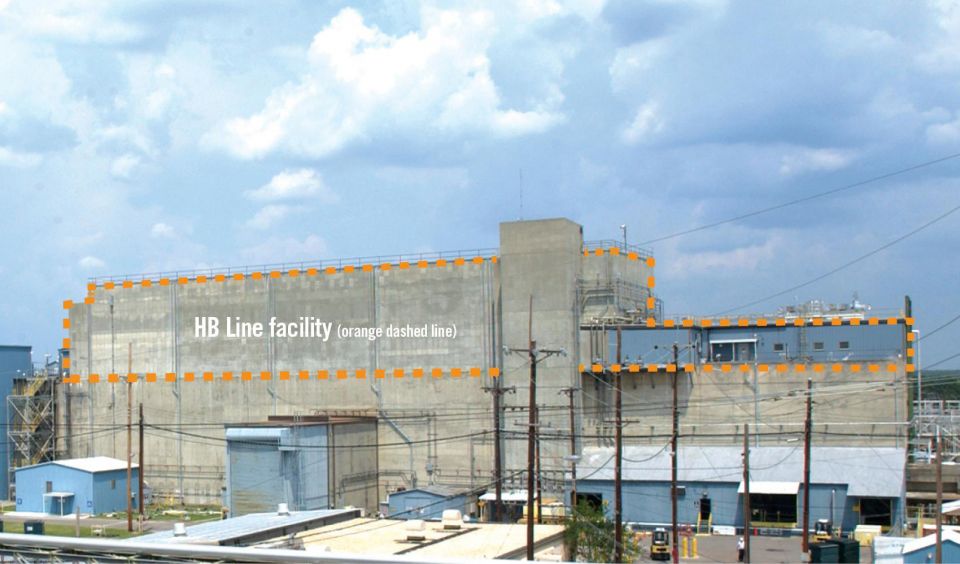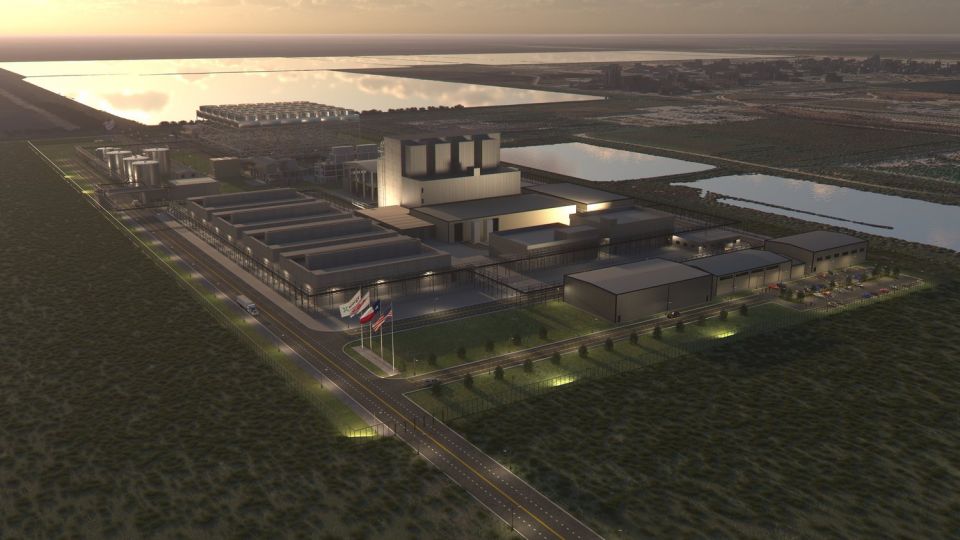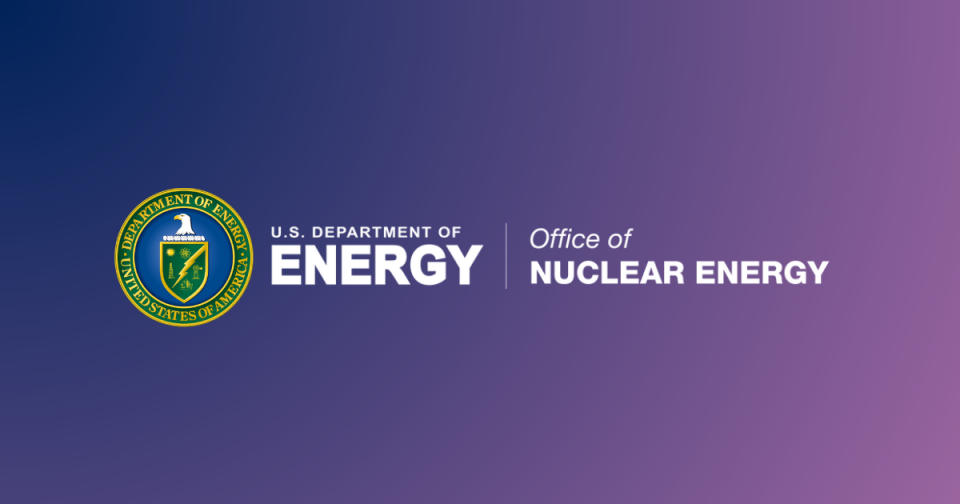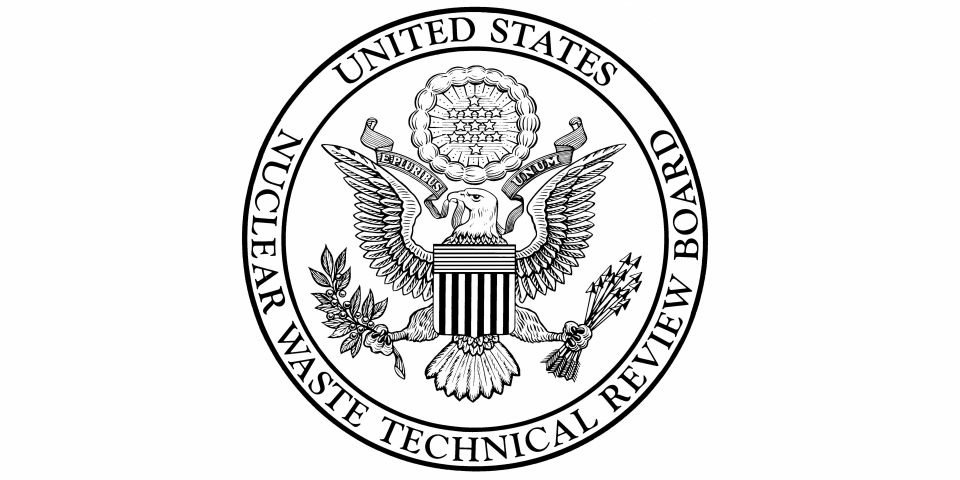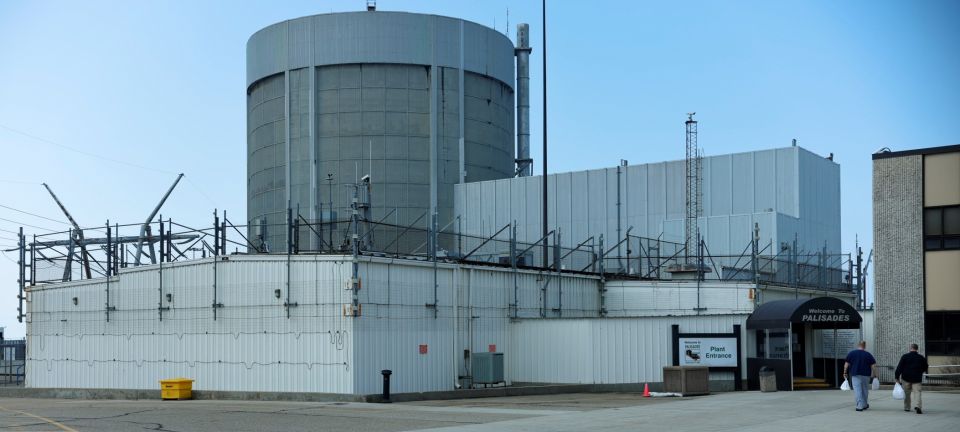Crash Course: The DOE’s Package Performance Demonstration
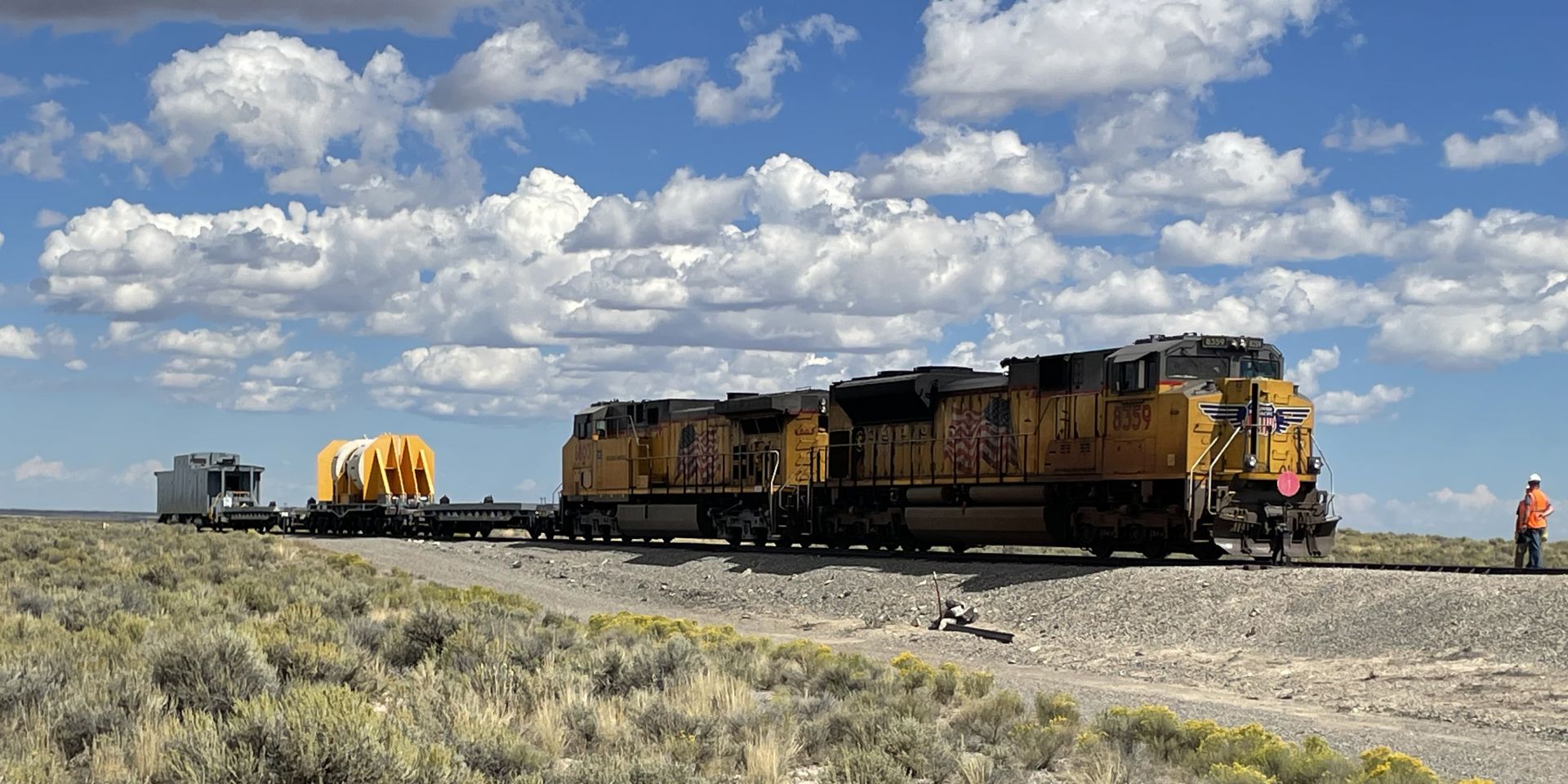
Inspired by a history of similar testing endeavors and recommended by the National Academy of Sciences and the Blue Ribbon Commission on America’s Nuclear Future, the Department of Energy is planning to conduct physical demonstrations on rail-sized spent nuclear fuel transportation casks. As part of the project, called the Spent Nuclear Fuel Package Performance Demonstration (PPD), the DOE is considering a number of demonstrations based on regulatory tests and realistic transportation scenarios, including collisions, drops, exposure to fire, and immersion in water.
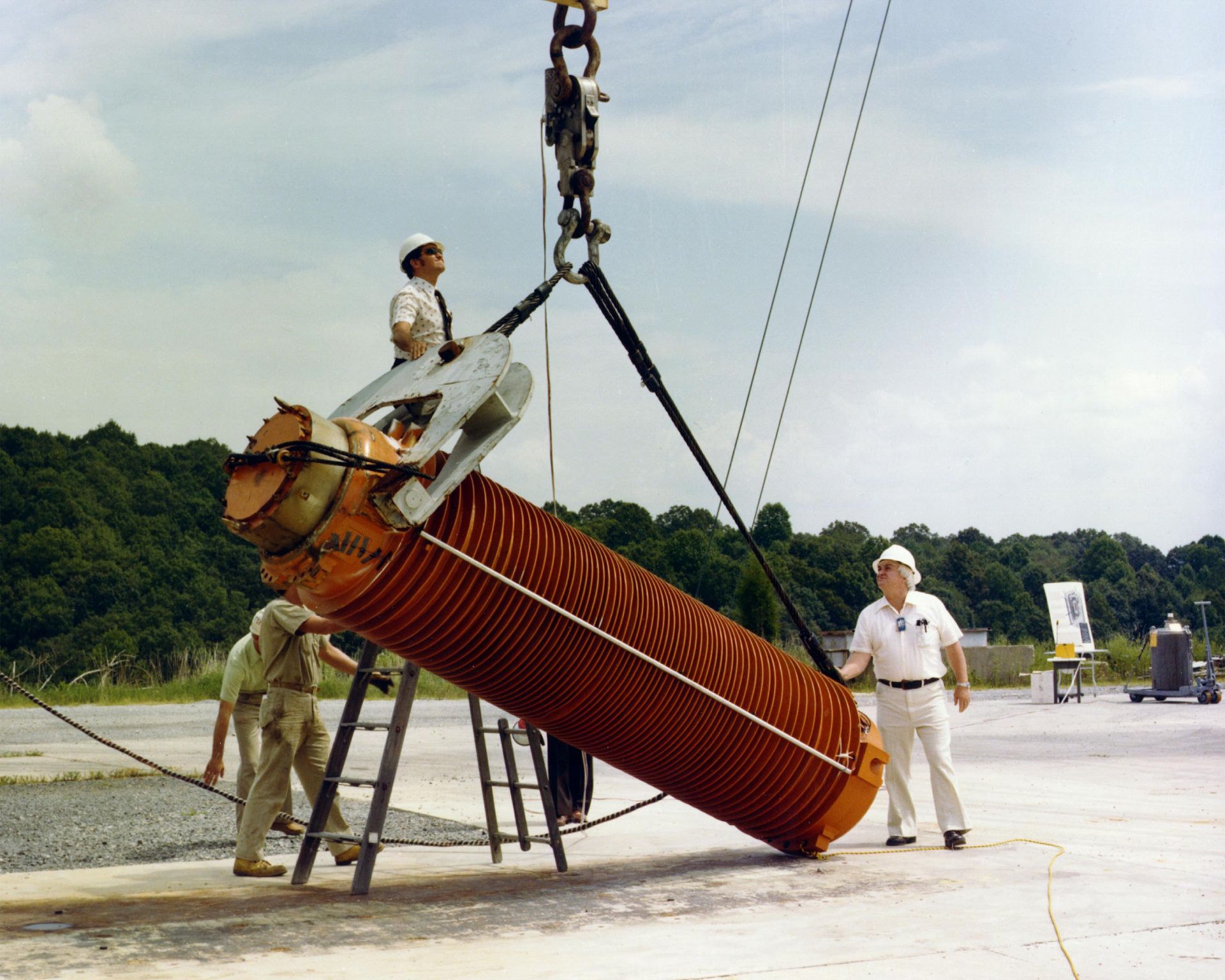
Engineers with SNL prepare a 22-ton nuclear fuel shipping cask for a drop test from a height of 30 feet in the 1970s. (Photo: DOE)
“This is not being done in a total vacuum. The DOE did not just decide to test a cask,” said Gerard Jackson, a DOE security specialist and federal manager, during a PPD information session. “We have been looking at this for quite a while,” Jackson added, noting that in the early 2000s, the Nuclear Regulatory Commission began an initiative called the Package Performance Study to examine the responses of spent fuel transportation casks to extreme transportation accidents.
While the NRC eventually abandoned plans to conduct physical testing on transportation casks due to a lack of funding, it did release two Package Performance Study reports. In June 2002, NRC staff published an issues report (NUREG/CR 6788) on a program scoping study conducted with Sandia National Laboratories. Then, in February 2003, a test protocols report (NUREG 1768) was released, presenting the agency’s preliminary testing plans.
“There is a lot of good information in that package performance program that we are looking at to leverage and inform what we are doing now,” said Jackson, regarding the NRC’s efforts.
Jackson also noted that the NRC’s study was endorsed by the National Academy of Sciences, which in 2006 issued the report Going the Distance? The Safe Transport of Spent Nuclear Fuel and High-Level Radioactive Waste in the United States. That report recommended full-scale testing of transportation casks as part of an independent, objective, and authoritative analysis of spent fuel and high-level radioactive waste transportation in the United States.
The 2012 report by the Blue Ribbon Commission on America’s Nuclear Future, which was formed at the request of President Obama to recommend a new strategy for managing the back end of the nuclear fuel cycle, recommended that the NRC proceed with its Package Performance Study tests with money provided from the Nuclear Waste Fund, noting that full-scale cask testing could be useful in enhancing public confidence in transportation safety. In its report, the commission wrote that it will be “vital to continue vigorous public and private research and regulatory oversight efforts in areas such as spent fuel and storage system degradation phenomena, vulnerability to sabotage and terrorism, full-scale cask testing, and others.”
Then, in 2018, the Western Transportation Board, an organization of 11 western states and two western Canadian provinces, recommended that production-model transportation casks be subjected to full-scale testing prior to the U.S. beginning any large-scale program to ship spent fuel. “To take full advantage of this value, the testing should be planned and performed in cooperation with stakeholders,” the board recommended in a position paper on cask testing.
Physical testing of spent fuel casks has been done previously, most recently as part of a technical tour of the 14th International Symposium on the Packaging and Transport of Radioactive Materials (PATRAM 2004), when full-scale casks were subjected to 9-meter drop tests at the Federal Institute for Materials Research and Testing (BAM) facility in Germany.
Beginning in 1981, the United Kingdom’s Central Electricity Generating Board conducted the Flask Test Project, also known as “Operation Smash Hit,” to investigate the way in which Magnox flasks (spent fuel casks) behave in severe transport accidents. During the three-year project, more than a hundred tests on flask components, model flasks, and other test pieces were conducted, culminating in the drop testing of a full-sized Magnox flask and a simulated rail crash test carried out in public in July 1984.
Prior to that, in late 1977 and early 1978, Sandia National Laboratories conducted four full-scale impact tests of spent fuel transport casks on both truck and rail transports, as well as a fire immersion test.
While those tests demonstrated the ability of spent fuel transportation casks to withstand real-world accident scenarios, the DOE felt that a new demonstration using modern casks in a contemporary environment was warranted.
“Those videos are still being used today to demonstrate how safe the casks are,” Jackson said regarding the films made during Operation Smash Hit. “They’re great videos. It was a great presentation, but we want something new.”
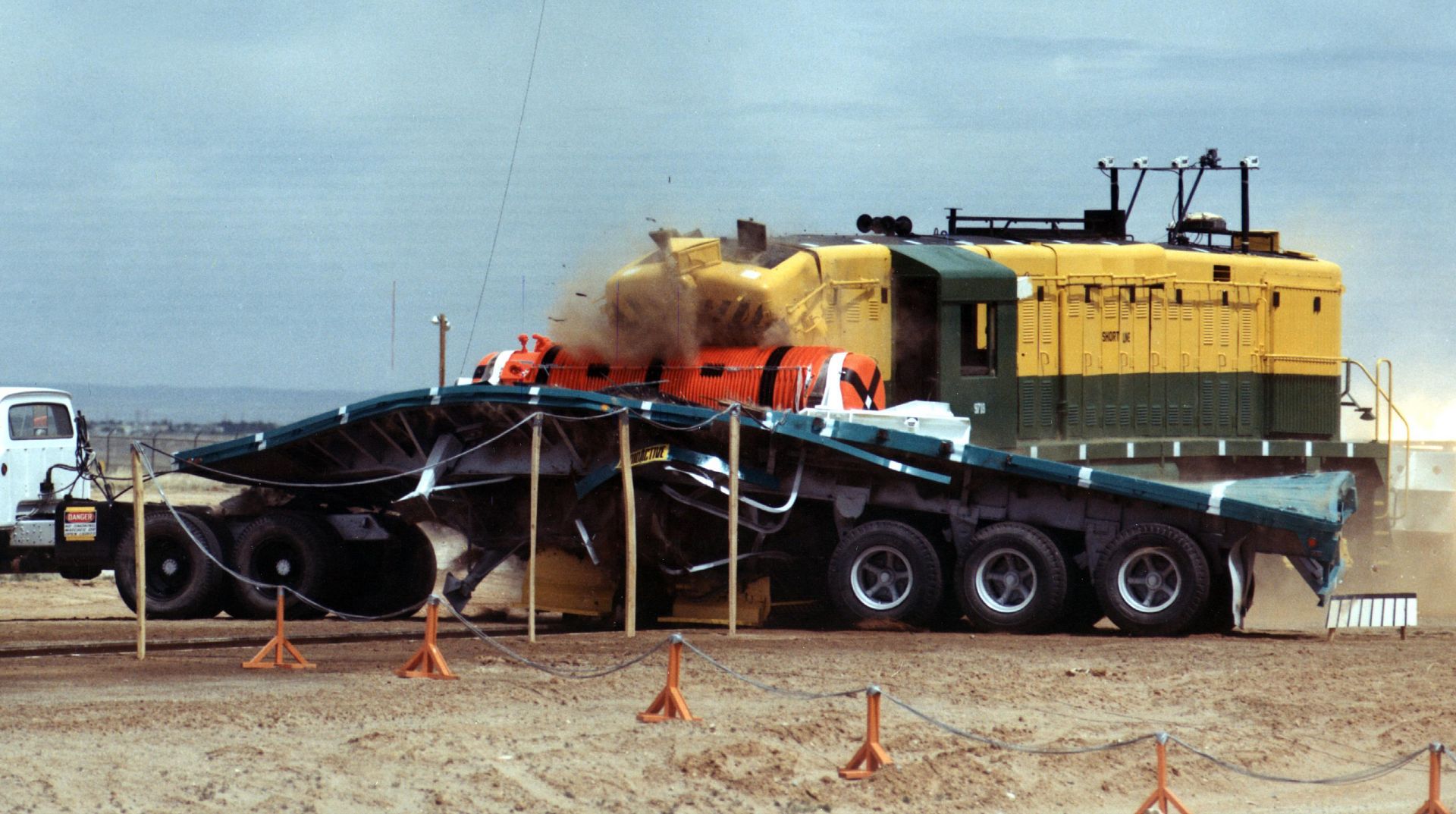
A locomotive strikes a spent fuel cask at 81.5 miles per hour during a full-scale test conducted by Sandia National Laboratories in 1977-78. (Photo: DOE)
Building trust
The DOE said its primary goal in conducting the PPD is to build trust and confidence that spent fuel and spent fuel casks can be safely transported across the country by rail, heavy-haul truck, and barge.
“We have been transporting spent nuclear fuel in this country for over 70 years,” said Jackson, adding that the U.S. Navy has a long history of transporting spent fuel from the nuclear naval fleet across the country. “A lot of that is not well known and what we want to do is bring to attention the fact that this is being done, being done well, and being done safely.”
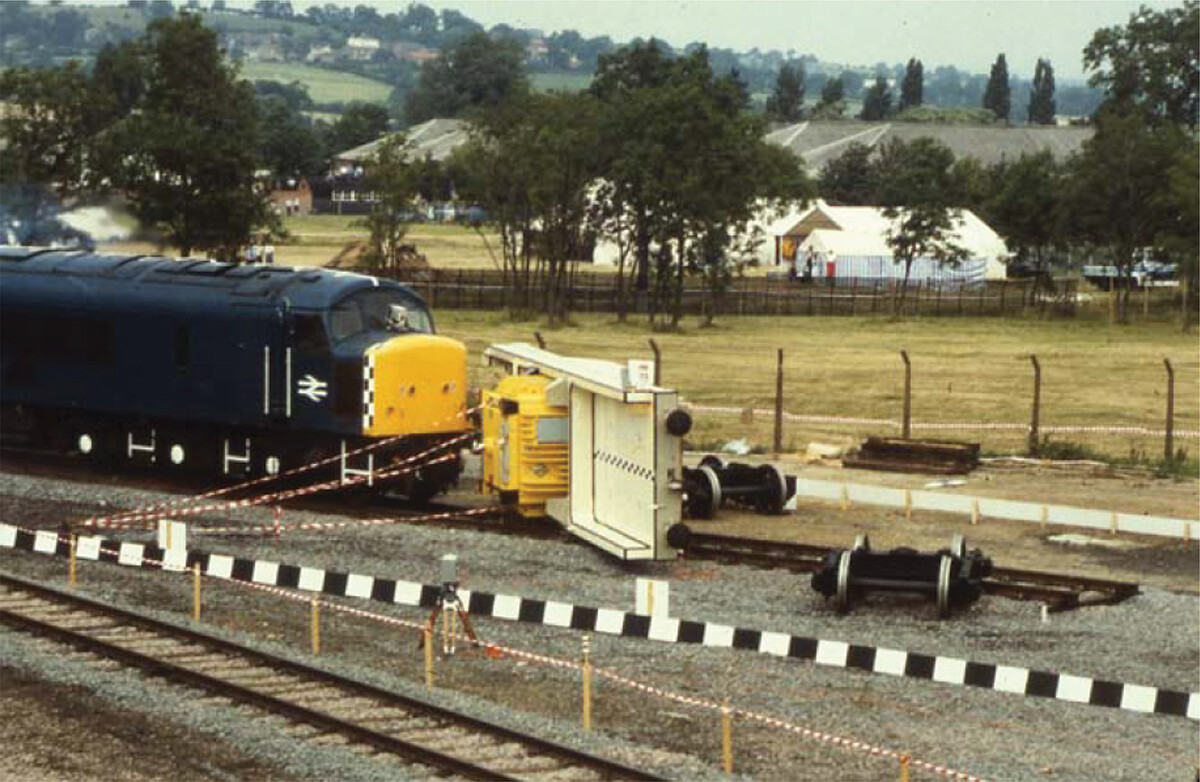
Full-scale testing of a Magnox spent fuel flask by train is carried out in England in 1984. (Photo: UK NDA/CEGB).
During an executive session of the American Nuclear Society’s Winter Conference and Expo, held November 17–21 in Orlando, Fla., Paul Murray, deputy assistant secretary of energy within the DOE’s Office of Nuclear Energy, discussed the need for the demonstration, given the department’s goals of shipping spent fuel to a consolidated interim storage site in the next decade.
Murray said the PPD grew out of the DOE’s efforts to site and build a federal consolidated interim storage facility for commercial spent nuclear fuel. “We heard clearly from members of the public that they were concerned about the transportation of spent nuclear fuel and high-level waste,” Murray said regarding the response the DOE received regarding its consent-based process for siting such a facility.
Given the current and growing inventory of commercial spent fuel in the United States, Murray estimated that by 2038, when it is projected that a consolidated interim storage site will be operational, the DOE will be transporting 3,000 tons of fuel a year to the site. “If I can move 3,000 tons of fuel a year, which is a lot, it would take us 50 years to move the fuel to interim storage,” he said.
Murray added that the DOE’s inventory of spent fuel and high-level radioactive waste from DOE legacy sites, including the Hanford, Idaho, Savannah River, and West Valley sites, will also need to be transported.
“At the end of the day, we will have to transport over 10,000 packages of spent nuclear fuel. Plus, 5,000 packages of high-level waste and all the [U.S.] Navy fuel and all the DOE’s fuel. We are going to be transporting material for potentially over 100 years. We have to have public confidence we can do that,” he said.
Preliminary plans
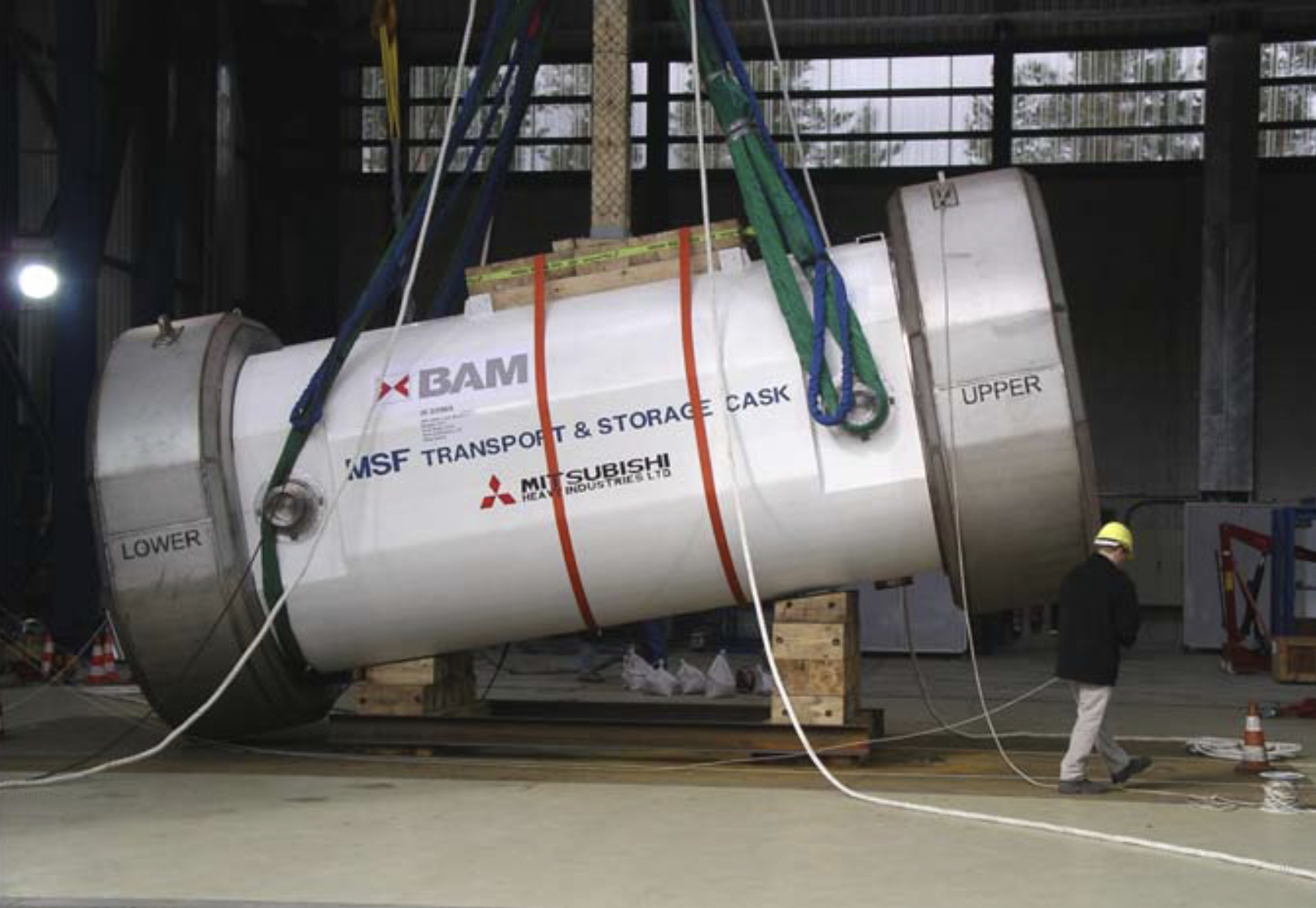
A Mitsubishi rail cask undergoes a 9-m drop test in 2004 at the BAM facility near Berlin. (Photo: BAM/K.D. Crowley)
Currently, the DOE is considering demonstrations based on tests described by the NRC in its regulations in Title 10, Part 71 of the Code of Federal Regulations, which describe hypothetical accident conditions. These include a free drop, in which the package is freely dropped 9 m onto a flat, unyielding surface; a dynamic crush test, where a 500-kilogram weight is dropped 9 m onto the package; a puncture test, where the package is dropped 1 m onto a vertical steel bar; a thermal test, where the package is fully engulfed in fire at an average temperature of 800°C for 30 minutes; and an immersion test, where the package is submerged under 0.9 m of water (fissile materials package) or 15 m of water (all packages).
The DOE is also considering additional “realistic” demonstration scenarios, including a collision with a cask transported by rail and immersion and retrieval from a body of water, possibly deeper and for longer than required by 10 CFR 71.
The DOE said, however, that it does not intend to use the demonstration as proof either for or against NRC regulations. “To be clear, we are not validating or reviewing anything that the NRC does. This is simply a starting point for us to take a look at what we may want to do to these casks in our demonstration,” Jackson said.
Murray concurred, saying, “We are not trying to redesign or question the safety of the storage systems. What we are trying to do is build public trust.” Murray added that the DOE does not intend to test casks to the point of failure, beyond their design basis. “What we want to demonstrate are everyday occurrences,” he said.
The DOE will also use the demonstrations to gather technical data on the casks to better understand the forces acting on the packages and to further support computer modeling. “If we are going to go through with this entire demonstration, we do not want to miss the opportunity to gather some great technical data,” Jackson said, adding that the DOE would also record high-resolution, high-speed video of any accident scenarios to use in departmental communications and public outreach campaigns. In addition to use in communications, the DOE sees the possibility of using such videos, as well as other data collected, in developing training materials for emergency responders and government officials.
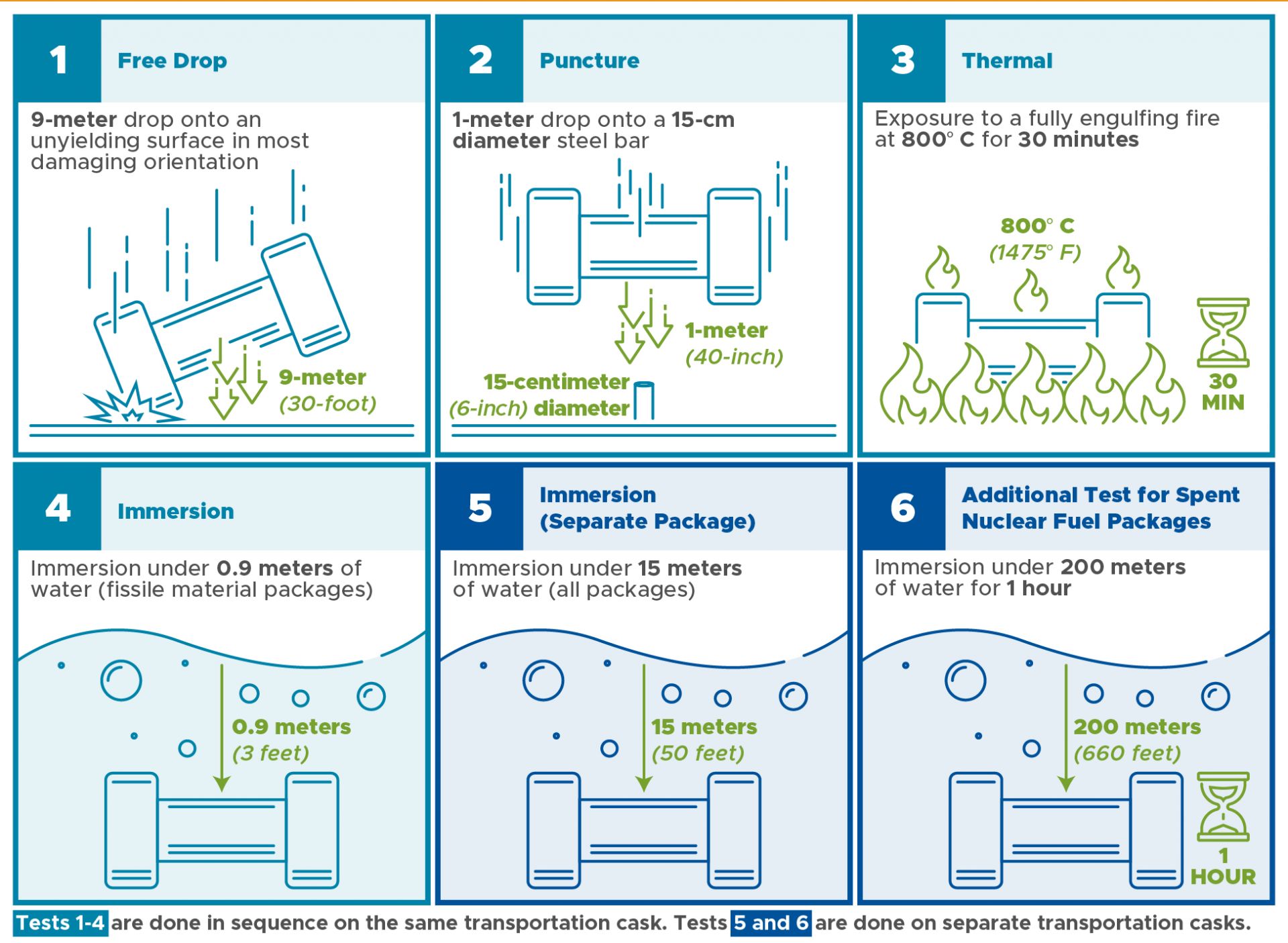
Tests described in 10 CFR Part 71. (Image: DOE)
Information request
While the final demonstration will depend on congressional authorization and funding, the DOE has begun a phased development schedule for implementing the PPD, beginning in 2024 with a preliminary outreach effort and ending with a target date of 2028 for physical testing.
As part of the second phase of the PPD, the DOE’s Office of Nuclear Energy issued a request for information/sources sought (RFI) notice on July 31, 2024, seeking input from all interested parties on the types of physical testing demonstrations the department should consider and how information gained from the demonstrations should be used.
In its RFI, the DOE asked for “input on parameters such as the demonstrations that could be performed, the transportation cask that could be used, and how results of a PPD could be effectively used and distributed.” The office said it is open to ideas for conducting a demonstration, adding that “the conduct must be practical/technically feasible, is subject to the constraints of authorization and availability of appropriated funds, and must meet DOE-NE’s objective of building public trust and confidence in the safety of spent nuclear fuel (SNF) transportation casks and SNF transportation by rail.”
The DOE also requested information from potential suppliers that could provide products or services for the demonstration. Such items the office was interested in receiving feedback on included the choice of transportation cask, the type of demonstrations that could be conducted, possible testing facilities and sites that could be used to conduct the demonstrations, and options for instrumentation, data collection, and videography.
Responses to the RFI were initially due by October 31, 2024. The DOE, however, later issued an additional opportunity to provide feedback on the program until January 31, 2025. In response to comments received during the initial RFI period, the DOE provided the extended information request with streamlined background information and fewer questions to facilitate receiving feedback from members of the public who are not familiar with spent fuel transportation but would still like to provide input to DOE’s planning process.
While responses to the RFI and extended information request are not expected until mid-2025, Mark Richter discussed some of the comments the Nuclear Energy Institute had provided the DOE during the ANS Winter Meeting executive session.
Richter, an NEI technical advisor, noted that the demonstration will require a lot of resources and that the NEI is advocating the DOE optimize the use of available resources, such as that the institute can offer, in order maximize the results. “This is going to be a once-in-a-generation opportunity, I would suspect, to actually do something like this, so we want to make sure that we are part and parcel to a good outcome,” he said.
Richter said the NEI is recommending that, for the demonstration, the DOE use large-capacity, rail-capable packages that would be expected to be used in an actual transportation campaign and that demonstrations are prioritized based on the likelihood of occurrence, such as a train or truck strike, or a barge strike and immersion in water.
“We see this as an opportunity not to just test the transportation package, but take a more holistic look at what this package does, what the transportation system can do, and how the execution of this can further assure the public that there will be no adverse impacts, or that if there is an accident, it could be easily mitigated with very low risk and no impact to communities,” Richter said.
Richter likewise pointed out the opportunity the demonstration presents for gathering technical data on the packages being tested. “I would instrument the heck out of the thing and capture whatever data you could get—loads, stresses, strains, acceleration,” he said.
According to Richter, the NEI is also recommending that the DOE be transparent in conducting the demonstration, making the results available in ways that are easily understandable to the public and conveyed in a way that increases public confidence. As such, Richter said the DOE should open the physical testing to the public, including the media, special guests, and community members. “If you can get some live eyeballs on the activity that are not part of the DOE or DOE contractor supporting the work, I think that would be good, because, again, that is going to add to the credibility,” he said.
CURIE, the DOE’s resource portal for nuclear waste management information, has set up a PPD webpage at curie.pnnl.gov/DOE-PPD with news and information on the program and the RFI, as well as background resources and documents.


